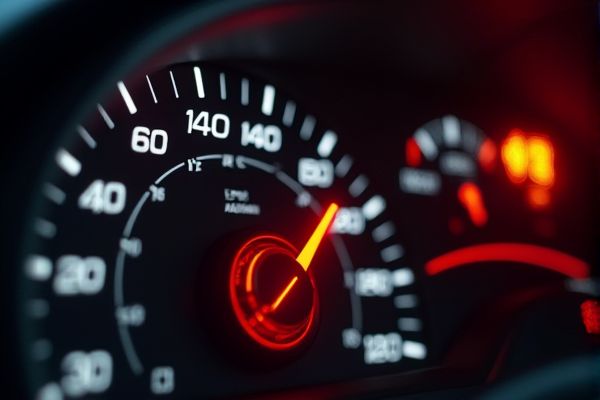
The check engine light on your Mini Coupe signals that the vehicle's onboard diagnostic system (OBD-II) has detected potential issues affecting engine performance, emissions, or fuel efficiency--commonly related to oxygen sensors, catalytic converter malfunctions, or misfire events. Prioritizing data from an OBD-II scan tool to retrieve diagnostic codes is crucial, as it pinpoints specific problems so you can address the underlying issues promptly and prevent further mechanical damage.
Mini Coupe check engine light on meaning
Loose Gas Cap
A common cause for the check engine light, leading to decreased fuel efficiency and potential emissions system damage.
Faulty Spark Plugs
Can cause engine stalling and decreased fuel efficiency, typically needing replacement between 40,000 to 60,000 miles.
Mass Air Flow Sensor Issues
Affects engine performance and startup times, leading to unoptimized engine operation.
Catalytic Converter Problems
Can lead to emissions failures and decreased engine performance, often caused by neglected maintenance.
Ignition System Faults
Includes issues with spark plug wires or ignition coils, which can cause misfires and engine problems.
Emissions Control Issues
Various components can fail, affecting emissions and engine efficiency.
Transmission Issues
Though less common, can trigger the check engine light if there are problems with transmission sensors or control systems.
O2 Sensor Malfunction
Affects fuel-to-air ratio, leading to decreased engine performance and efficiency.
Fuel and Air Metering System Problems
Includes faulty fuel injectors or mass airflow sensors, impacting engine operation.
Battery Issues
A weak or dead battery can trigger the check engine light due to its role in vehicle systems.
Head Gasket Failure
A serious issue that can lead to significant engine damage if not addressed promptly.
Carbon Buildup
Can cause misfires and engine performance issues, often requiring cleaning or replacement of affected components.
For car users
If your Mini Coupe's check engine light comes on, start by safely pulling over and inspecting easy fixes such as ensuring the gas cap is tightly secured and checking fluid levels, since a loose cap or low fluids can trigger the light. If the light remains or you notice unusual engine behavior, use a diagnostic scan tool or schedule a professional evaluation to accurately pinpoint and address any underlying issues.
Ignoring the check engine light
Ignoring your Mini Coupe's check engine light can lead to reduced fuel efficiency, worsening engine performance, and the potential for significantly more expensive repairs if minor issues are allowed to escalate. Data from diagnostic tests indicate that prolonged neglect may cause emissions problems and additional sensor or system failures, ultimately impacting both the reliability and safety of the vehicle.
How to reset?
To reset the Mini Coupe's check engine light, connect an OBD-II scanner to the diagnostic port, retrieve and review the error codes, address any underlying mechanical faults, and then clear the codes through the scanner. Alternatively, while disconnecting the battery for about 15 minutes may force a reset, using a dedicated OBD-II scanner is prioritized because it preserves valuable system data and ensures precise diagnostics.
A Mini Coupe's check engine light can indicate issues ranging from a minor sensor fault to a more serious component failure, with repair costs typically between $100 and $1,000, including diagnostic fees. Prioritizing key data, note that precise expenses depend on the error code and necessary parts replacement, making a professional diagnostic test essential for an accurate estimate.
Future prevention
Regularly follow the manufacturer's maintenance schedule for your Mini Coupe--including timely oil changes, replacement of spark plugs, air and fuel filters, and routine OBD-II diagnostics--to reduce the risk of triggering the check engine light. Prioritize using high-quality fuel and certified parts while addressing any sensor or electronic issues immediately, as data-backed preventive measures significantly lower unexpected engine alerts and costly repairs.
